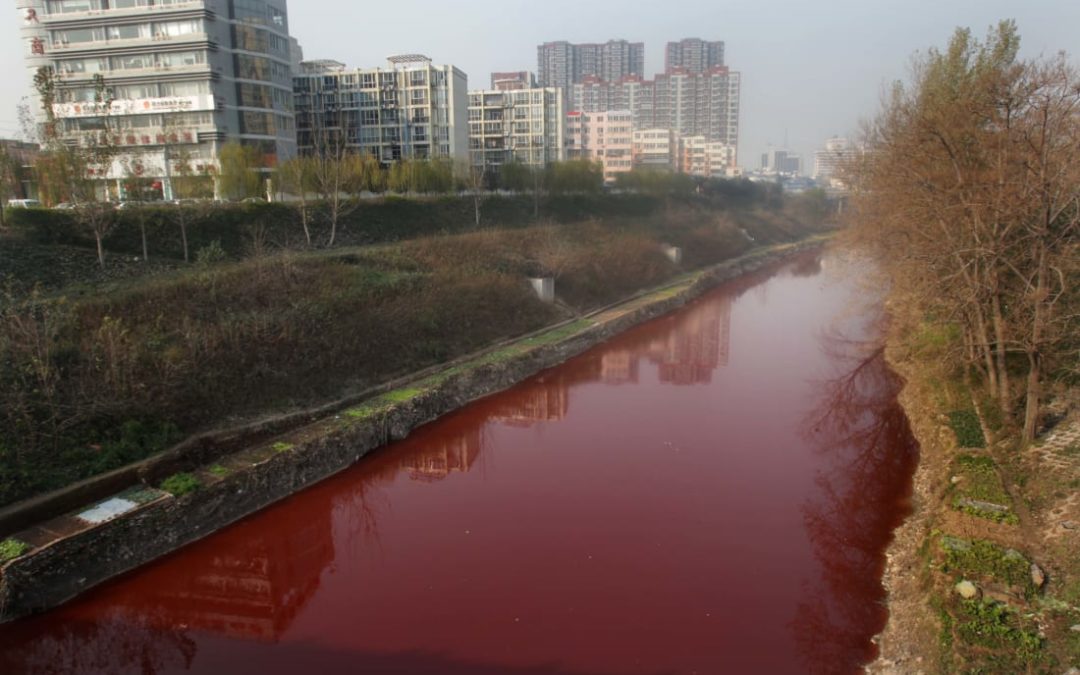SOURCE: CNN
DATE: September 28, 2020
SNIP: When Haji Muhammad Abdus Salam looks across the trash-filled river near his home in one of Dhaka’s major garment manufacturing districts, he remembers a time before the factories moved in. “When I was young there were no garment factories here. We used to grow crops and loved to catch different kinds of fish. The atmosphere was very nice,” he said from Savar, just north of the Bangladesh capital. The river beside him is now black like an ink stain. Abdus Salam said waste from nearby garment factories and dye houses has polluted the water.
“There are no fish now,” he said. “The water is so polluted that our children and grandchildren cannot have the same experience.”
Bangladesh is the world’s second biggest garment manufacturing hub after China, exporting $34 billion worth of garments in 2019. And clothes made, dyed and finished in the country often end up in main street shops across the United States and Europe.
But as consumers browse through the season’s latest color trends, few will spare much thought to the dyes used to create everything from soft pastels to fluorescent hues — or their toxic history.
Fashion is responsible for up to one-fifth of industrial water pollution, thanks in part to weak regulation and enforcement in producer countries like Bangladesh, where wastewater is commonly dumped directly into rivers and streams. The discharge is often a cocktail of carcinogenic chemicals, dyes, salts and heavy metals that not only hurt the environment, but pollute essential drinking water sources.
Ridwanul Haque, chief executive of the Dhaka-based NGO Agroho, called toxic chemical pollution a “huge problem in a country like Bangladesh.” Haque, whose organization provides clean drinking water and free medical care to marginalized communities, said the rivers and canals that run through Dhaka have turned a “pitch black color” due to the sludge and sewage produced by textile dyeing and processing factories. The water is “very thick … like tar,” and during the winter — when monsoon rain no longer dilutes the wastewater — “you can smell it,” he said.
The fashion industry uses around 93 billion cubic meters (21 trillion gallons) of water annually, enough to fill 37 million Olympic swimming pools, according to the Ellen MacArthur Foundation. Along with finishing, dyeing is the most polluting and energy-intensive processes involved in making our clothes.
Finishing is when chemicals or treatments are applied to fabric to give it the desired look or feel — such as bleaching, softening or making the garment water resistant or anti-wrinkle. Large amounts of water and chemicals are also used during dyeing, to ensure vivid colors bind to the fabric and don’t fade or wash out.
Producing a single pair of jeans, for example, consumes around 7,500 liters (2,000 gallons) of water, from growing raw cotton to finished product, according to the United Nations.
To ensure its blue color, the thread or fabric is repeatedly dunked in huge vats of synthetic indigo dye. After dyeing, the denim is treated and washed with more chemicals to soften or texture it. Getting the faded or “worn in” look requires even more chemical bathing, which uses acids, enzymes, bleach and formaldehyde.
“Every season we know that the fashion industry needs to highlight new colors,” said Ma Jun, one of China’s leading environmentalists, in a phone interview. But, he added, “each time you have a new color you’re going to use more, new kinds of chemicals and dye stuffs and pigments and catalysts.”
Once they’re done, the cheapest way for factories to get rid of unusable, chemical-laden wastewater is to dump it into nearby rivers and lakes.
While various types of dyes are used for different fabrics, azo dyes — synthetic nitrogen-based dyes — have come under particular scrutiny from the fashion industry and environmentalists. They are commonly used in garment manufacturing and produce bold colors like bright reds or yellows.
But some azo dyes under certain conditions break down and release aromatic amines, a type of chemical compound (also used in pesticides and pharmaceuticals) that can increase the risk of cancer. These are so toxic that the European Union, China, Japan, India and Vietnam have all banned their use and import.
Water pollution from the textile industry is a huge problem across garment-producing countries, most of which are found in Asia due to its huge pool of cheap labor.
When environmentalist Ma founded the Beijing-based Institute of Public and Environmental Affairs (IPE) over a decade ago, many rivers and lakes in China — the world’s largest clothes manufacturer — were so polluted that they were effectively dead, he said.
The chemicals used to dye clothes also impact garment workers who, in some factories, don’t have adequate protective clothing and may inhale toxic fumes. In Dhaka, experts say there are a growing number of factories that comply with international standards on chemical use and management, but there are still many smaller or subcontracted factories where conditions continue to fall short.
“People don’t have gloves or sandals, they’re barefoot, they don’t have masks, and they are working with dangerous chemicals or dyes in a congested area. They are like sweat factories,” Haque said, from firsthand accounts that he’s heard while working within communities tied to factories.
But because the textile industry is hugely important to Bangladesh’s economy, accounting for 20% of its GDP and employing about 4 million people, residents like Abdus Salam don’t want to see factories shuttered.
“Many of our people are working in these factories,” he said. “If they close these factories, the workers will become jobless.”

